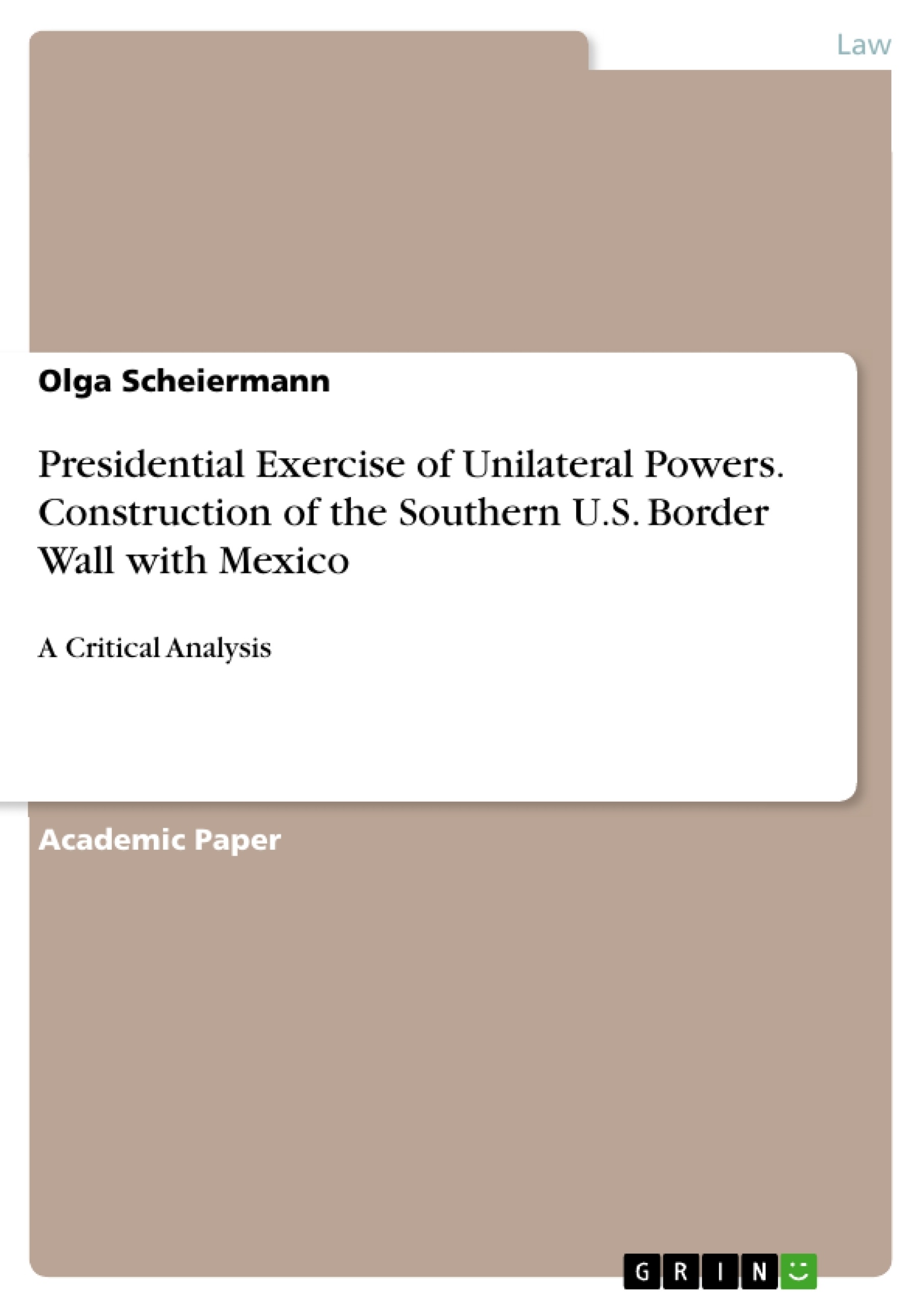This paper intends to prove the hypothesis that the (over)use of executive powers undermines the long-term confidence in the institution of the president, as well as usurping the legislative branch incorporated by the U.S. Congress and dramatically shatters the system of checks and balances. On January 25, 2017, Trump signed an executive order, entitled "Border Security and Immigration Enforcement Improvements", aiming at enhancing the enforcement of border security along the US-Mexican border by way of the construction of a 2,000-mile border wall.
After losing a fight with the Democratic-led House concerning the identified expenses of 8.1 billion for the wall, President Trump declared on February 15, 2019, a national emergency concerning the situation on the southern border of the United States under the National Emergency Act (NEA). By doing so, President Trump could have eventually undermined the legislative branch, as Congress traditionally holds the power of the purse. On ground of potential infringement of the Appropriations Clause of the Constitution and the Administrative Procedure Act (APA), the Congress passed a joint resolution to void the President’s National Emergency Declaration, which was however vetoed by the President himself.
The issue with the construction of the US-Mexican border wall is deeply rooted in the power struggle of both the executive branch (the president, including his subordinate institutions from the government, most notably the White House and the Cabinet) and the legislative branch (the two chambers of the Congress, the House of Representatives and the Senate). This emergency declaration could have infringed one of the basic principles of the separation of powers as manifested and practised in the US constitutional law, enabling the president to act independently, ultimately disregarding constitutional allocation on funding matters, as in the prevailing case.
Table of Content
I. Introduction
II. Inter-branch conflict between the legislative and executive branch
1. Executive vesting powers
2. Constitutional ambiguity of the principle of separated powers
3. Partisanship as an accelerator of presidential powers
III. Arguments supporting a strong executive branch
1. Men of good character maintaining good government
2. Necessity for the president to act swiftly in times of national emergency
IV. Extensive presidential powers threatening two core democratic principles
1. Checks and balances
2. Separation of power in view of the abuse of presidential powers
V. Critical analysis of the Trump’s declaration of emergency
1. Grounds and existence of a situation of national emergency
2. Trump’s declaration of national emergency in the lights of the NEA
3. Legality of Trump’s declaration of national emergency
4. Necessity for congressional approval
VI. Conclusion
- Citation du texte
- Olga Scheiermann (Auteur), 2019, Presidential Exercise of Unilateral Powers. Construction of the Southern U.S. Border Wall with Mexico, Munich, GRIN Verlag, https://www.grin.com/document/1000146
-

-

-

-
Téléchargez vos propres textes! Gagnez de l'argent et un iPhone X. -

-
Téléchargez vos propres textes! Gagnez de l'argent et un iPhone X. -

-
Téléchargez vos propres textes! Gagnez de l'argent et un iPhone X. -

-
Téléchargez vos propres textes! Gagnez de l'argent et un iPhone X. -

-
Téléchargez vos propres textes! Gagnez de l'argent et un iPhone X. -

-
Téléchargez vos propres textes! Gagnez de l'argent et un iPhone X. -

-
Téléchargez vos propres textes! Gagnez de l'argent et un iPhone X. -

-
Téléchargez vos propres textes! Gagnez de l'argent et un iPhone X. -

-
Téléchargez vos propres textes! Gagnez de l'argent et un iPhone X. -

-
Téléchargez vos propres textes! Gagnez de l'argent et un iPhone X.

